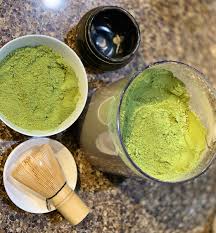
The Importance of Matcha
Matcha, a powdered form of green tea, has transcended its traditional roots in Japanese tea ceremonies to become a global health phenomenon. Not only is it revered for its rich flavor and vibrant green color, but matcha is also celebrated for its numerous health benefits, appealing to health enthusiasts and casual consumers alike. As people become increasingly health-conscious, the demand for matcha continues to grow, making it a topic of interest in contemporary nutrition.
Health Benefits of Matcha
Recent studies have highlighted matcha’s high concentration of antioxidants, particularly catechins, which are known to combat oxidative stress and inflammation. A single serving of matcha reportedly contains three times more antioxidants than regular green tea. Additionally, matcha is prized for its ability to boost metabolism and promote mood enhancement due to its natural caffeine and L-theanine content. These compounds work synergistically to provide a calm alertness, making matcha a popular choice for individuals looking to increase focus without experiencing jitteriness.
Growing Popularity and Uses
In 2023, the global matcha market is expected to exceed $4 billion CAD, driven by its versatility. Matcha is not only found in traditional teas but is also a trendy ingredient in various culinary creations, including smoothies, lattes, baked goods, and even savory dishes. Social media platforms, particularly Instagram and TikTok, have played a significant role in showcasing matcha recipes and promoting its appealing aesthetic, further boosting its popularity among younger consumers.
Market Trends and Cultural Integration
As the matcha trend continues to rise, more cafes and restaurants across Canada are incorporating matcha into their menus. This embrace of matcha has also spurred interest in Japanese culture and traditional practices surrounding tea. Some establishments offer matcha workshops, educating patrons about the proper preparation and significance of matcha in Japanese heritage. The fusion of modern culinary practices with traditional methods underscores matcha’s role as both a health food and a cultural symbol.
Conclusion
In summary, matcha’s emergence as a superfood reflects broader trends in health and wellness, appealing to individuals seeking nutritious and enjoyable alternatives. Its myriad health benefits, culinary versatility, and cultural roots make matcha a fascinating subject for continued exploration and appreciation. As more consumers turn to matcha for its health advantages and unique flavors, its significance in the global marketplace is likely to grow, influencing food culture and lifestyle choices across communities.



